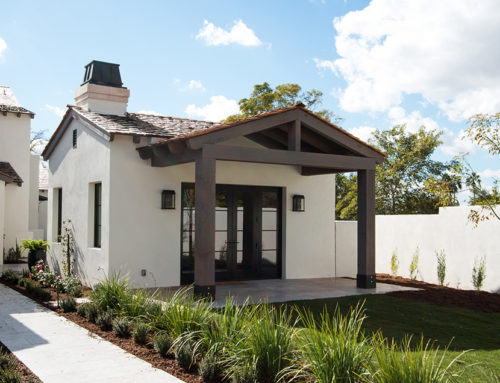I love residential rentals—the residual income and tax deduction through depreciation provides some stability and writeoffs to my unstable income stream. What I don’t love is fixing stuff and problematic tenants. I am currently finalizing leasing my condo in San Francisco after a tenant turnover and I thought I’d share some of my quick and dirty tips on how to rent your home/condo/apartment for maximum returns.
The first part is analyzing if the numbers make sense to rent out your unit. If you’re getting negative cash flow with no potential of appreciation, maybe it’s better to sell. You can download the same Excel template I use and work through the different numbers to plug in below:
1. Determine Monthly Rent
The first step is to determine how much you can rent your unit for. It’ll vary depending on location, finishes, and amenities. While you won’t have access to fancy tools and databases professionals have, there are some easy ways determine market rent.
- Craigslist – Take a look at similar rentals in your area and how much other people are asking. You won’t be able to see the amenities such as parking, gym, club house etc but this gives you a good starting point.
- PadMapper.com – Although it’s meant for renters, Padmapper lets me filter by unit type and location much quicker than Craigslist.
- Zillow.com – Zillow is ok… I’ve found their estimate to have a higher margin of error sometimes. Who knows exactly where they’re getting their databases from and the algorithm but for a quick snapshot it’s ok.
- Rentometer.com – This is my favorite free tool for estimating rent. It breaks down the average, median, and the different percentile. This helps me estimate better how much to adjust up/down for nicer/worse than average units
- Zilpy.com – Similar to Rentometer, it gives me more color on the market range. I use this more as a sanity check.
2. Subtract Your Expenses
- Property tax – Google your local county tax rate and apply it here.
- Insurance – It varies quite a bit depending on the value of the property, where you’re located, and what type of unit you have. Condos will cost much lower because the HOA covers the exterior.
- Mortgage – In the example spreadsheet I attached here I used 20% down, 4% interest rate, 30 year mortgage. You can tweak it however you like.
- Property management – 7 or 8% is pretty standard. If you have a large portfolio or new units that doesn’t need a lot of upkeep you can probably negotiate down to 6%. If you manage yourself this would be zero.
- Vacancies – 5% is a pretty safe assumption. If you manage it properly you should have a month to market it after they give the notice to move out. If you don’t have any vacancies, you’re not charging high enough rent.
- HOA – if your unit has HOA dues make sure to deduct that.
- Landscaping – More for multifamily with grass and plants. Single family homes you can ask the tenants to take care of that themselves.
- Utilities – If you own a multifamily and it’s hard to separately meter or for common area you’re responsible for as the landlord.
- Marketing – If you just have a couple of units there’s plenty of free services. For owners of multiple units you can use a service like Rentlinx to manage all your listings and account for your fees here. I’ll go into how I market my units in the next post.
- Maintenance – This will get a lot of debate. As an example I usually use $1,000/yr per unit for a 1BR 1BA unit in good shape. Maybe double it for units that are older or single family homes. This is just an estimate to help you see quickly if it makes financial sense to rent, let’s not get too hung up on it.
- Capital Reserves – You don’t have to worry about it if there’s an HOA that takes care of the exteriors. For other units let’s say a roof cost $20,000 and lasts 20 years so you set aside $1,000/yr for the big expenses to make sure you’re covered.
3. performance metrics
- Net Operating Income = Income – Expenses. Financing cost is not part of the calculation to keep it a more apples to apples comparison. Some people might use all equity, syndication, etc. If you have other income streams like laundry service etc that’s factored in here. Reserves and big one time expenses are usually not calculated here but for practical purposes it’s ok as long as you’re consistent.
- Cash Flow = NOI – Financing Costs. If your property doesn’t cash flow… well, that’s not good.
- Cap Rate = NOI / Property Price. More for institutional or multifamily, but it’s a good common bench mark to see how your returns compare.
- Gross rent multiplier = Property Price / Annual Gross Rent. I don’t see this used very much for your mom and pop landlords, this is more for institutional.
- Cash on Cash = Annual Before Tax Cash Flow / Total Cash Invested. More for folks with limited capital or want to see how their performance is with leverage.
I didn’t want to get into specific rules on what’s a good yield here. Every market is different and people have different criteria. I know if the monthly rent is not greater than 1% of the purchase price it’s a hard pass for some of my investor friends. Meanwhile if you can get something to cash flow positive in the Bay Area that’s a big win already. Speak with your local contacts, professionals, or run the numbers on a few places to gauge what’s a good return.





